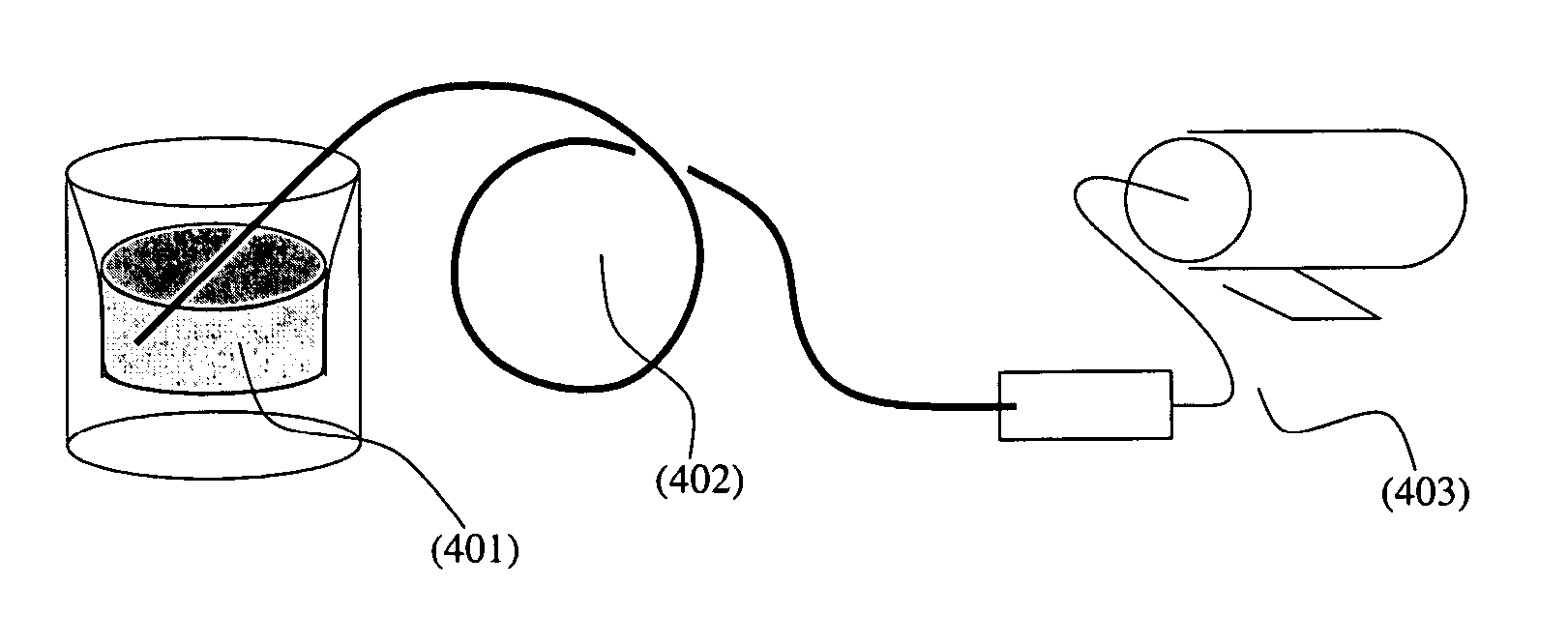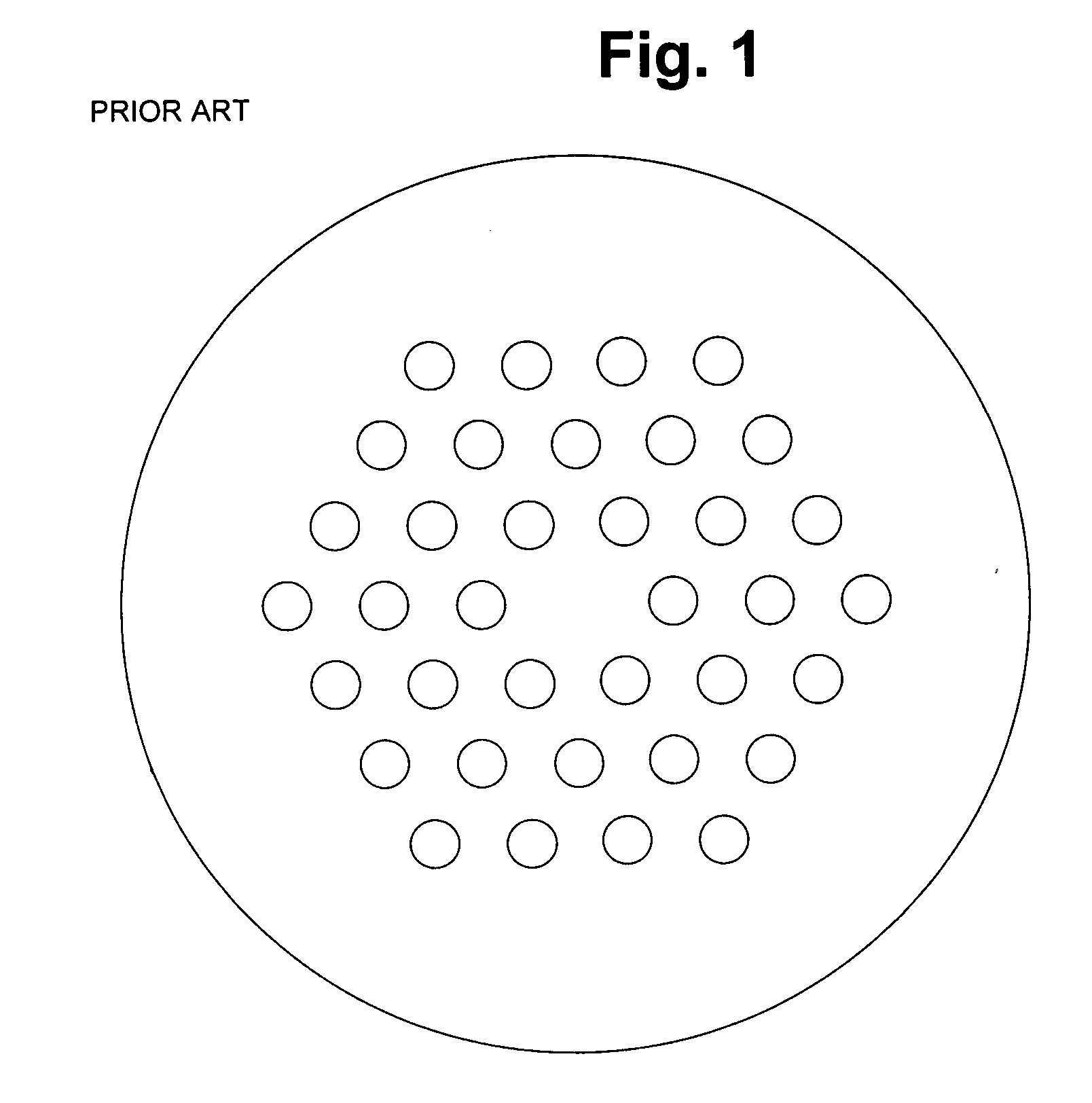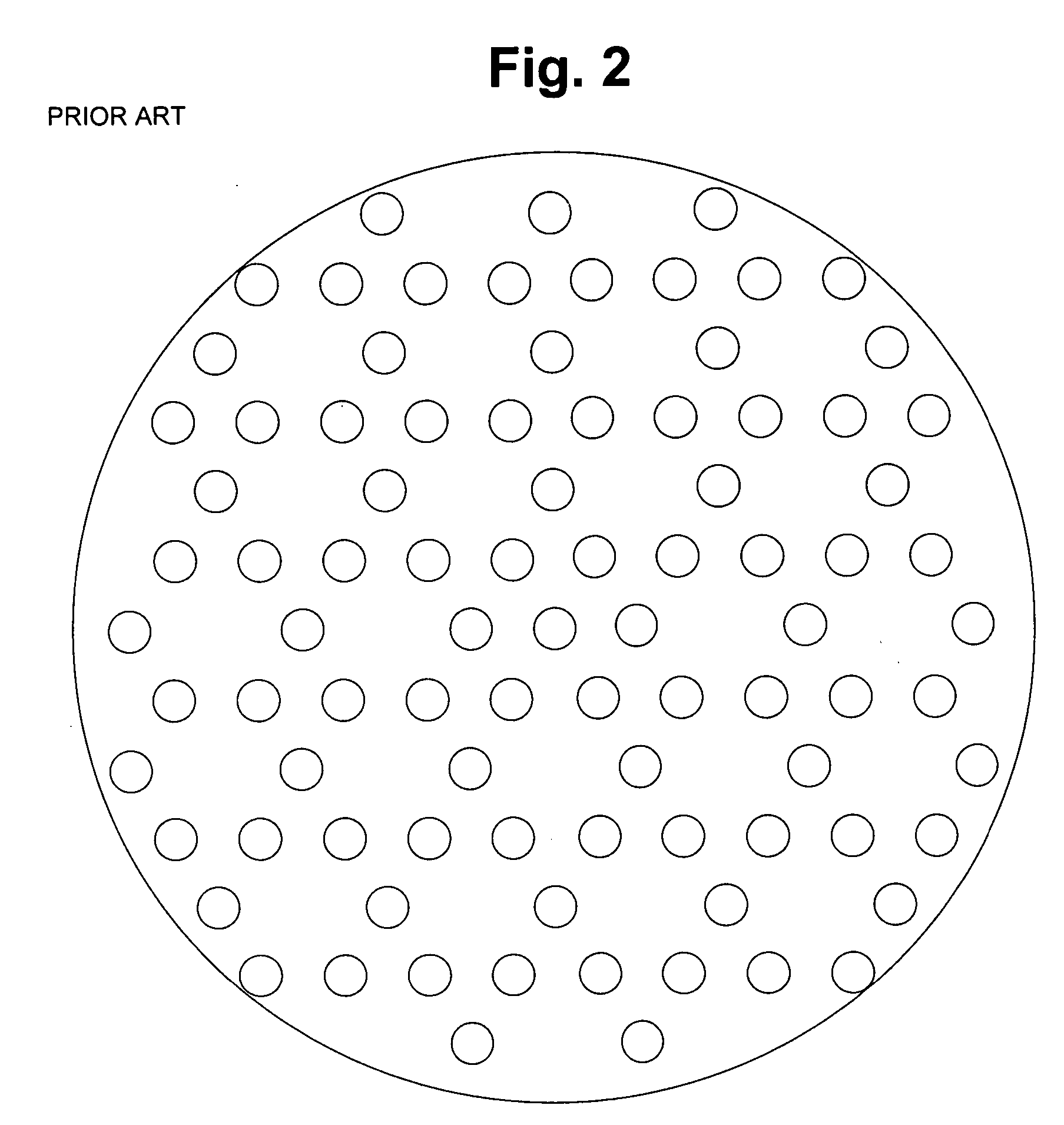Composite material photonic crystal fibres, method of production and its use
a technology of photonic crystal fibres and composite materials, applied in the direction of optical fibers with multi-layer cores/claddings, optical waveguide light guides, instruments, etc., can solve the problems of limited waveguide forming ability of optical crystal fibres, no means for selectively filling holes, and limited waveguide properties of present optical crystal fibre waveguides. , to achieve the effect of reducing the cost of selective filling, and high viscosity
- Summary
- Abstract
- Description
- Claims
- Application Information
AI Technical Summary
Benefits of technology
Problems solved by technology
Method used
Image
Examples
Embodiment Construction
[0166] If we take point of reference in the recent development of optical fibres, a very important development have been the appearance of photonic crystal fibres (PCFs), which typically are manufactured from pure silica with a number of microscopic holes placed in the full length parallel to the axis of the fibre. A schematic illustration of the cross section of a PCF of an often discussed type is shown in FIG. 1. The specific fibre has a solid silica core surrounded by a cladding consisting of air-filled holes placed in a regular triangular pattern according to prior art. This fibre guides light by the principle of modified total internal reflection (M-TIR), which is to some degree similar to the waveguiding principle of standard optical fibres, but has different spectral properties.
[0167] Another type of PCF according to prior art is illustrated on FIG. 2, which shows a so-called photonic bandgap (PBG) fibre. This type of waveguide operates by a fundamentally different waveguidi...
PUM
 Login to View More
Login to View More Abstract
Description
Claims
Application Information
 Login to View More
Login to View More - R&D
- Intellectual Property
- Life Sciences
- Materials
- Tech Scout
- Unparalleled Data Quality
- Higher Quality Content
- 60% Fewer Hallucinations
Browse by: Latest US Patents, China's latest patents, Technical Efficacy Thesaurus, Application Domain, Technology Topic, Popular Technical Reports.
© 2025 PatSnap. All rights reserved.Legal|Privacy policy|Modern Slavery Act Transparency Statement|Sitemap|About US| Contact US: help@patsnap.com



